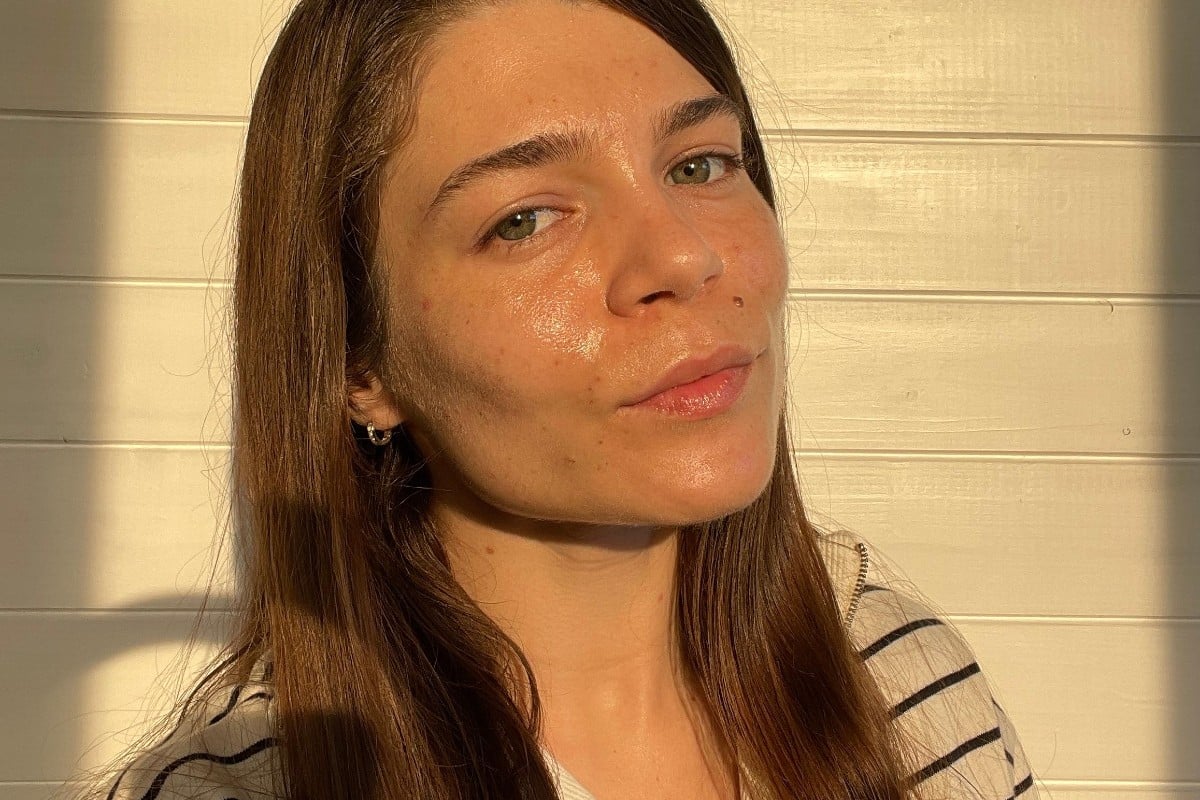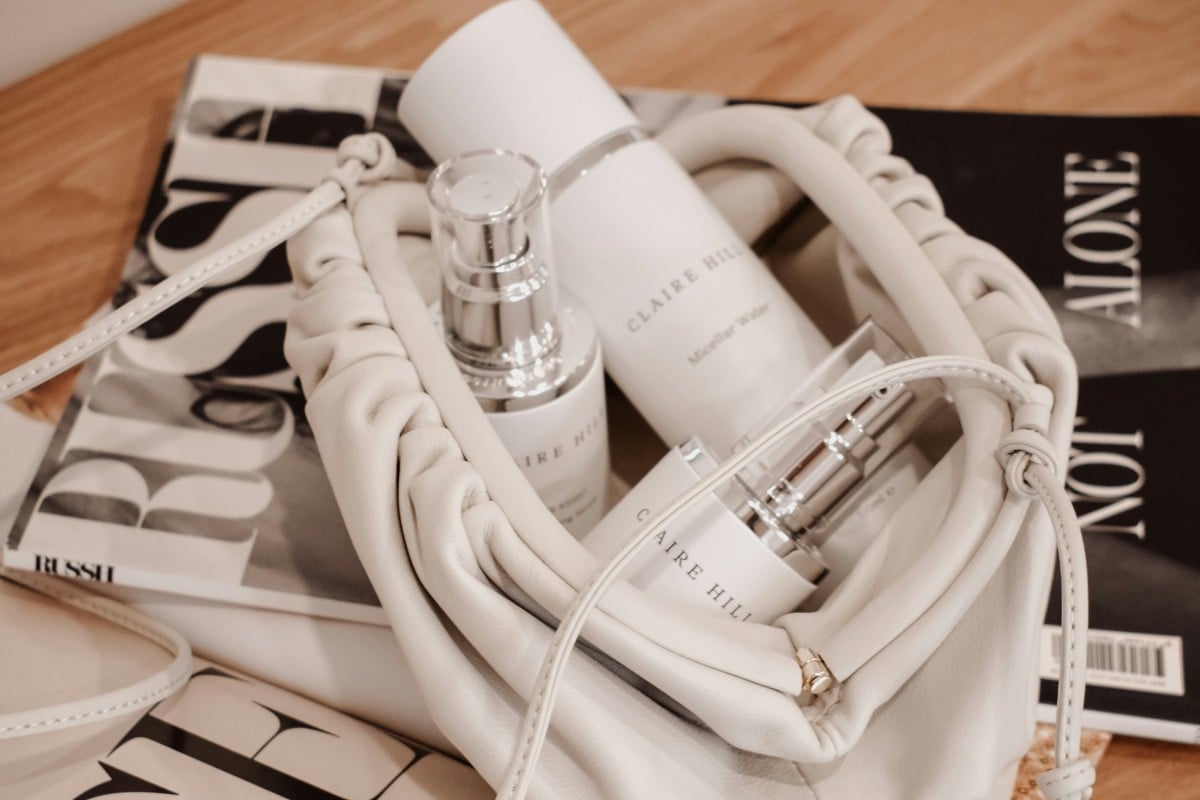Are you tired of dealing with dry, dull, rough, and flaky skin? Or perhaps your moisturizer isn’t working, and no matter how much you use it, it simply doesn’t quench your thirsty complexion. The problem might not be with the product itself (though it could be a cause) but rather your whole skincare strategy. Regardless, it’s time to put in place a proper moisturizing regimen that caters to your skin and addresses its specific needs. Knowing how to moisturize your skin and what products to use is key to achieving a healthy and plump face.
Feeling puzzled already? Don’t. I’ll guide you through everything you need to know in simple and easy-to-follow steps so that you can be confident about how to moisturize your skin and get the most out of it.
How to moisturize your skin and tips to get maximum hydration
Know your skin condition
The quest for a moist complexion starts with understanding your skin type and any specific condition you may have, such as dryness, excess sebum, increased sensitivity, large pores, or acne. Once you have a clear understanding of them, you can start to research different moisturizers that address your particular skin needs.
Pick a moisturizer best suited for your skin
Considering you have your skin profile figured out, it’s time to pick a moisturizer that works in harmony with it. This can seem trivial, but it really isn’t. Using an unsuitable product can compromise the results and may even break out your skin, so invest time analyzing your choices and assessing which one you need. In case you’ve missed our guide about the different types of moisturizers and which one you should use based on your skin, here’s a quick recap to get you on the same page.
Ideally, when picking a moisturizer, you should keep your skin type, condition, and sensitivities in mind. If you have normal skin, you can use pretty much anything as long as the formula aids in hydrating. If your skin is dry and tight, you may need a heavier cream to seal hydration and replenish moisture. On the other hand, those with oily, combination, and acne-prone skin should look out for a non-comedogenic and lightweight gel formula that doesn’t clog the pores or feel greasy. Finally, if your skin is sensitive and easily reacts to other products, look out for gentle moisturizers that don’t contain drying alcohol, fragrance, or astringents.
Also, when selecting a moisturizer, it’s important to give product labels a close read to identify the ingredients because they will determine how effective the product will be for your skin.
Seek out humectants, occlusives, and emollients
Humectants, occlusives, and emollients are basically the three main groups of moisturizing ingredients and have different functions to keep skin hydrated. Humectants draw water from the environment and pull it into the skin, occlusives seal that moisture by covering the skin’s surface with a protective film, and emollients instantly soften and relieve dryness.
Ideally, your moisturizer should contain all of them to improve skin hydration on every front.[1][2] Here are some of the most common ingredients used in moisturizing products you should look for:
- Humectants: hyaluronic acid, urea, panthenol, glycerin, honey, aloe vera, propylene glycol, sorbitol, alpha-hydroxy acids, and betaine
- Occlusives: mineral oil, petroleum jelly, beeswax, shea butter, squalane, silicones, dimethicone, and zinc oxide
- Emollients: vitamin E, ceramides, shea butter, cholesterol, squalane, fatty acids, jojoba oil, castor oil, coconut oil
However, there are a few other things you need to pay attention to.
First, humectants may actually exacerbate dryness and increase transepidermal water loss in a low-humidity climate.[3] But occlusives help mitigate this impact by reducing the amount of water that passes through the skin. As such, if you live in the desert cities of Las Vegas or anywhere where the air humidity is low (under 70%), it’s imperative to use occlusives too.
Yet, some occlusives may feel too greasy and potentially clog the pores in people with oily skin prone to acne. If your skin is oily and breaks out, steer clear of heavy occlusives and use non-comedogenic ones like squalane, shea butter, and dimethicone.
Emollients are essential, too, especially ceramides, cholesterol, and fatty acids. These emollients are lipids that form the epidermal barrier, which is the outer layer of the skin responsible for moisturizing and protecting it.[4] If you experience severe dryness, dehydration, and irritation, it could be a sign that the moisture barrier is depleted. In this case, you need to apply an emollient moisturizer to recover and soften the skin.
Know when and how often to moisturize
Typically, it’s recommended to apply moisturizer twice daily, once in the morning and once in the evening, to keep skin quenched. However, depending on your skin condition and environmental factors, you may need to adjust the frequency of usage, such as adding a midday moisturizing session.
One common scenario when you might need to adjust your moisturizing regimen is when the skin is damaged and vulnerable due to certain treatments or environmental factors, like a chemical peel, prolonged sun exposure, or tretinoin treatment. Here, you may need to use a heavier emollient moisturizer up to three or four times a day to provide additional hydration and support the healing process.
Use different moisturizers for day and night
While it’s ok to have a double-duty moisturizer for day and night, using separate formulas allows you to cater to your skin’s specific needs at different times of the day. During the day, it’s best to use a lightweight and fast-absorbing moisturizer that packs antioxidants to protect your skin from external damage. For the night, a richer and heavier cream (like an ointment) is more suitable as it can provide deeper hydration, repair damaged skin, and replenish the epidermal barrier. Also, because during the night the body repairs itself, you want to use moisturizers loaded with actives that work in synergy with this regenerating process, like retinol, peptides, epidermal growth factors, and glycolic acid.
Seal the moisture with an occlusive
Although this isn’t totally necessary, it can help a lot if you have very dry skin. Basically, this step requires applying a thick layer of an occlusive (preferably petrolatum) over your entire face after completing your whole nighttime skincare routine to seal the moisture into your skin.
This method is called slugging, and it’s one of the few social media trends that get credit from dermatologists. Occlusives create an invisible film over the surface to block the water from evaporating through the skin while you sleep, locking in hydration for the whole night so that you wake up to a plump and moist complexion. Do this only at night because applying occlusives during the day may feel too greasy, and don’t do it when you use retinol or alpha-hydroxy acids. Here you can learn more about the slugging technique and how to do it like a pro.
Consider a hydrating and moisture-replenishing serum if your skin is severely dry and dehydrated
Your moisturizer isn’t the only item that can provide hydration. If you feel your skin is dehydrated and tight, use a hydrating serum as well. A hyaluronic acid serum or one with vitamin C or green tea is incredibly great to add an extra dose of hydration and hike up moisture levels. Using it before your moisturizer can really make a difference.
Moisturize by climate and environmental conditions
Most overlook the environmental factors in their living area, such as the climate and pollution, that often affect the skin’s moisture. For example, dry and cold climates can strip the skin of natural oils, while hot and humid climates can cause excessive sweating and sebum production.[5] Similarly, exposure to pollution and other toxins can damage the protective barrier and make it more susceptible to moisture loss.
It’s also important to remember that different seasons can have different effects on your skin. For instance, during the winter months, indoor heating, blowing winds, and low temperatures can dry out your skin and make it more prone to flaking, redness, and irritation.
To address these issues, account for the environmental factors in your living area and adjust your skincare routine accordingly.
If you live in a dry or windy climate, you need to use a heavier moisturizer than someone living in a humid climate. Similarly, if you live in an area with high levels of pollution, you should use a moisturizer with added antioxidants and incorporate additional products, such as cleansers or exfoliators, to help remove impurities from your skin.
Use a home humidifier
A home humidifier can be extremely beneficial for your skin, especially in dry climates. As a matter of fact, dry indoor air has been identified as the main cause of dehydrated skin in winter and low-humidity environments.[6]
To understand why this is happening, you need to know about the natural ability of the skin to hydrate itself. You see, the skin can naturally draw water from the air to maintain proper moisture levels. But when the air is too dry and lacks water molecules, the skin is no longer able to draw moisture from the atmosphere, which leads to dehydration. For this reason, it’s necessary to use a home humidifier to increase the humidity in the air so the skin has enough water to hydrate itself.
According to a study, a humidifier can considerably reduce the risk of dry skin, so consider having one nearby.[6] The same study also suggests that older people need a higher humidity level than younger people to keep their skin hydrated.
Avoid moisture-stripping products
This is a no-brainer, but still, some people get it wrong. No matter how much moisturizer you use, your skin may still feel dry if you continue to use drying products that strip moisture. Harsh cleansers with sulfates and alcohol, astringent toners, products with salicylic acid, and hot water can all deplete moisture and leave your skin thirsty. So better steer clear of them if you struggle to keep your skin moisturized.
What dries out the skin and what to avoid to maintain hydrated skin
Besides avoiding topical products that can strip moisture, there are other things that can dehydrate your skin that you should eliminate from your lifestyle. If you can’t manage to moisturize your skin despite the efforts you put into your skincare routine, it could mean something else may dry out your skin from the inside out.
Air conditioning, heating tools, the weather, lack of sleep, not drinking enough water, consuming too much alcohol and caffeine, taking too hot showers, having a high salt intake, and a high glycemic index (aka too much sugar) can all wreak havoc on your skin moisture barrier and leave it parched. Also, studies found that stress has a major influence on the epidermal barrier and can worsen transepidermal water loss, which over time can dry the skin and deplete it of essential moisture.
The moral of the story? To help your skin retain moisture naturally:
- Limit the consumption of alcohol, caffeine, sugar, and salt, and instead drink plenty of water.
- Consume foods such as vegetables, fruits, nuts, whole grains, olive oil, and moderate fish and meat which have a high water and fatty acids content that hydrate the skin from the inside out.
- Reduce stress levels and practice mindfulness.
- Sleep 7-8 hours a night.
- Avoid excessive exposure to indoor heating tools.
Why is your skin dry and rough even when you moisturize?
If your skin is dry even after you use moisturizer, it could indicate that:
- You’re overwashing your face
- You exfoliate too much
- You don’t exfoliate enough
- Your skin’s barrier is damaged
- You use products that strip the skin’s essential oils
- You use the wrong moisturizer
- You don’t use your moisturizer enough
- You don’t adapt your routine to climate change
- You have an underlying skin condition
- You don’t use a home humidifier
- You’re taking too long baths and hot showers
Should you use moisturizer before makeup?
Using a moisturizer as a base before applying makeup is crucial for achieving a crease-free, long-lasting look. If you don’t moisturize your skin before applying makeup, chances are the foundation and concealer crease and tend to steep into fine lines. On the other hand, moisturized skin becomes a smooth canvas to which makeup adheres easily, ultimately boosting the staying power of your foundation. Yep, makeup settles better on moisturized skin and tends to last longer throughout the day with no flakes and no creases. Plus, pores appear shrunk when applying moisturizer before foundation, giving your skin a blurred, airbrushed look.
Summary
Follow these steps to properly moisturize your skin:
- Pick a moisturizer according to your skin condition and environmental factors.
- Cleanse your skin every time before moisturizing with a gentle, non-irritating cleanser. This will remove dirt, oil, and makeup and prepare your skin to better absorb the moisturizer. Don’t overwash, as it can strip the essential oils.
- Apply moisturizer. Take a nickel-sized amount of product, warm it in your hands, and gently massage it into your face.
- Consider adding a hydrating serum to your routine as well, and use it before the moisturizer to provide additional moisture.
- Adapt your moisturizing regimen to climate changes. For instance, in winter, you need a heavier moisturizer than in summer.
- Use a home humidifier.
- Avoid drying products such as cleansers with sulfates, alcohol-containing products, fragrances, and harsh toners.
- Exfoliate your skin 1-2 times a week to remove the buildup of dead cells, pollution, and debris accumulated on the surface that often leads to dry and flaky skin. Exfoliation also increases the effectiveness of the moisturizer.
- Apply sunscreen every morning.
- Repeat. Use the moisturizer two times a day on cleansed and damp skin, in the morning and in the evening. If your skin is still dry, you may need to switch to another moisturizer.
The bottom line
Skincare is pretty much a trial-and-error process, and there’s no one-size-fits-all solution for moisturizing the skin, which means what works for your friend may not work for you. So be open to trying different products. Always be patient, as some products may take a few weeks to show results, and consider keeping a skincare journal to help track the effectiveness of different products and routines. Remember, it’s essential to establish a skincare routine that works for you, taking into account all the relevant factors, including your skin type, environmental factors, and any specific condition you may have.
Footnotes
Women’s Concepts uses reliable sources, including dermatologists’ insights, clinical trials, and scientific journals, to find accurate information and support all the facts shared in our articles. All statements and claims have clear and legit references. Read our editorial policy to learn more about our sources of information, our process of researching and fact-checking the content, and how our team strives to keep all articles updated, completed, and trustworthy.
- Purnamawati S, Indrastuti N, Danarti R, Saefudin T. The Role of Moisturizers in Addressing Various Kinds of Dermatitis: A Review. Clin Med Res. 2017 Dec.
- Sethi A, Kaur T, Malhotra SK, Gambhir ML. Moisturizers: The Slippery Road. Indian J Dermatol. 2016 May-Jun.
- Harwood A, Nassereddin A, Krishnamurthy K. Moisturizers. Treasure Island (FL): StatPearls Publishing; 2022 Jan-. Available from: https://www.ncbi.nlm.nih.gov/books/NBK545171/
- Ananthapadmanabhan, K.P., Mukherjee, S. and Chandar, P. (2013), Stratum corneum fatty acids: their critical role in preserving barrier integrity during cleansing. Int J Cosmet Sci, 35: 337-345. https://doi.org/10.1111/ics.12042
- Eva Rawlings Parker. The dermatological manifestations of extreme weather events: A comprehensive review of skin disease and vulnerability. The Journal of Climate Change and Health, Volume 8, October 2022.
- Jin Y, Wang F, Payne SR, Weller RB. A comparison of the effect of indoor thermal and humidity condition on young and older adults’ comfort and skin condition in winter. Indoor and Built Environment. 2022;31(3):759-776. doi:10.1177/1420326X211030998





